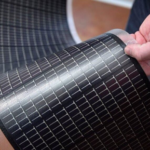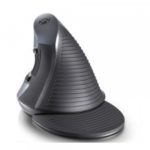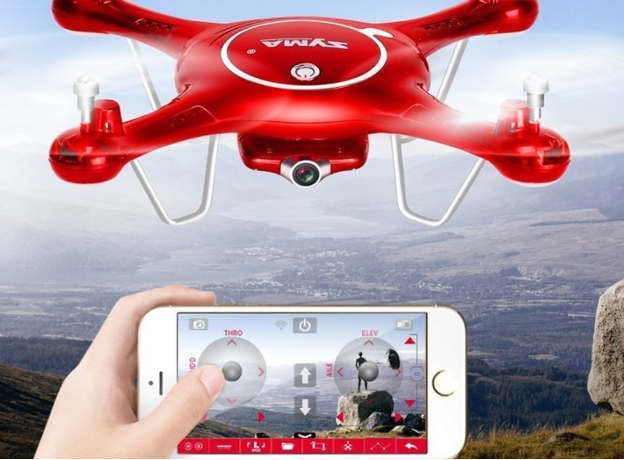Unicycle: what it is, how it works and how to learn to ride it
Understanding how to operate a unicycle is quite simple. To do this, you need to stand on it and lean forward a little - then the engine will start moving. If you accept the starting position, the mechanism will stop. To turn, you need to lean slightly to the right and left, respectively. How the model is structured, how to ride correctly, and what characteristics to look for when choosing is described in detail in the presented article.
The content of the article
The principle of operation of the unicycle
First of all, you need to understand what a unicycle is. The device consists of one wheel (unicycle) in a durable plastic case. Equipped with 2 footrests on which the user stands and controls.
The mechanism has a motor that is controlled by magnets that create electromagnetic fields. The device is powered by a rechargeable battery, which is charged from the mains. To control the position in space, the device is equipped with gyroscopes.
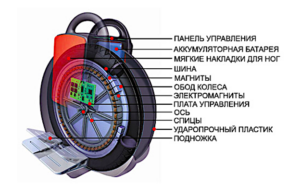
We can say that a unicycle is a compact mechanism that responds to the position of the body, its tilt, and thus moves along the road. The gyroscope installed here is similar in principle to a children's spinning top or top. Here's how a unicycle works:
- Built-in sensors determine the position of the mechanism.
- They transmit a signal to the board.
- This, in turn, controls the battery and commands the direction of current from the battery model.
- Due to this, an electromagnetic field is formed that affects the magnets.
- Each magnet has a north and south pole. If they interact with the same poles, repulsion occurs, and if they interact with different poles, attraction occurs. In the first case, the engine accelerates, in the second, it slows down.
- We can say about a unicycle that it is a device that works through a combination of electromagnets. The user (rider) stands on the footrest, tilts his body slightly, the gyroscope reads this signal, and the wheel accelerates.
- As soon as the rider returns the body position to its original (vertical) position, the mechanism, on the contrary, slows down until it completely brakes. The characteristics of a unicycle allow you to do this.

Pros, cons and unicycles
We can say about a unicycle that it is a unicycle that serves as a means of individual mobility (similar to scooters or skateboards). It does not work from muscle power, like, for example, a bicycle, but from a mechanism that is powered by electrical energy. Such a device is usually used when walking on good roads, for example, in parks. It is not considered as a vehicle.
If you study not a unicycle with your own hands, but industrial models, you can highlight several advantages:
- minimal dimensions, compactness - the device takes up virtually no space, it can be stored even in a small room;
- transportability - light weight and dimensions allow you to take the model with you, transport it by car, in a taxi and public transport;
- it’s easy to learn how to ride a unicycle and store it;
- Some models have a large diameter, which increases cross-country ability.
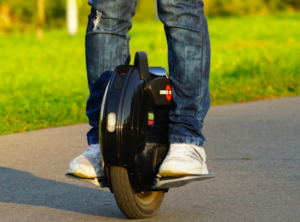
But there are also disadvantages:
- the battery does not always last long - if discharged, the wheel will stop completely, that is, you cannot ride it at idle speed;
- mastering riding is more difficult than, for example, riding a scooter, but you can still get your first skills in just 1-2 hours.
Specifications
Before you understand how to ride a unicycle, the photo of which is presented in the article, it is recommended to study the technical characteristics. Specific parameters depend on a particular model, but there are also general indicators:
- Speed – can reach up to 30 km/h provided the battery is 100% charged. If the battery is only half charged, the speed drops to 20-25 km/h. But you can perform tricks on a unicycle with such a charger. If the level is below 30%, the maximum speed will be 15-18 km/h.
- Battery capacity is an extremely important characteristic, which determines both the duration of the walk and the speed. It is better to choose lithium-ion or lithium-polymer batteries with an indicator of 700 Wh.
- Diameter – optimally at least 12 inches (range from 14 to 18). If the wheel is small, it will be uncomfortable to ride on, it will be squat and bounce around a lot even on small bumps.
- Weight directly depends on the size of the wheels and battery capacity. But in any case, it does not exceed 15 kg with rare exceptions (for example, a double unicycle can weigh even 20-24 kg).
- Power - the more it is, the higher the speed and the faster the acceleration. For most models, the rated power is estimated at 500-600 W, and the maximum power is 1000-1200 W. If we consider the most powerful types, they will cost much more, and the performance can be up to 2000 and even 2500 W.
- The power reserve allows you to estimate the duration of your walk.The indicator depends not only on the battery capacity, but also on the weight of the rider. Even the most inexpensive models provide an average reserve of 15-30 km. Powerful mechanisms allow you to travel up to 100-150, and sometimes up to 200 km.
How to learn to ride
It’s quite easy to understand what a unicycle is from the photo. At the same time, the question arises of how to control it, since it is not a scooter, and certainly not a bicycle. The main difficulty is associated with the presence of only one wheel. In this case, it is necessary to maintain good balance, as well as practice and understand how the tilt of the body affects the beginning of movement, its termination, acceleration and deceleration.
Operating the mechanism is intuitive. The general instructions are:
- Turn on the power.
- Lower the footrests and place the wheel on a level surface - it does not have to be perfectly level.
- Stand with one leg and make a test movement forward (half a step) and backward.
- Stand on both footrests and carefully start moving, slightly tilting your body forward.
- To speed up, bend over a little more and feel how the device reacts to changes in body position.
- Make turns by leaning left or right, respectively.
- Take the starting position with your body to slow down and (if necessary) subsequent braking.
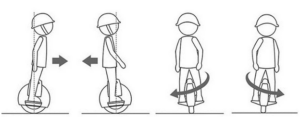
If this control method seems inconvenient, you can use a unicycle with a seat and steering wheel, as in the photo.
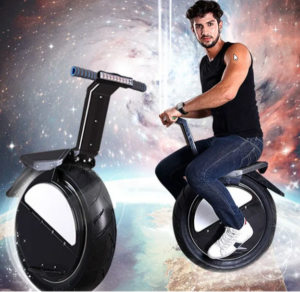
But unlike classic models, this design is more bulky and costs more. Thus, for walking, the easiest way is to use a regular unicycle with a sufficiently capacious battery for a large power reserve.

